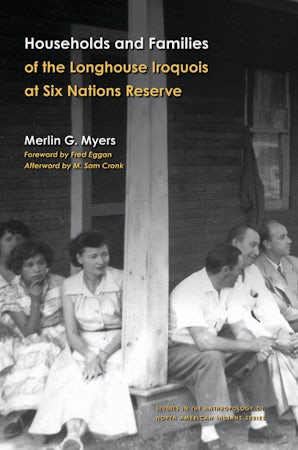
Studies in the Anthropology of North American Indians Series
260 pages
Illus., maps
In the late 1950s, Merlin G. Myers conducted fieldwork among these traditionalists. He collected data on household structure and kinship relations from 150 families and interpreted his findings within the context of structural-functional anthropology, providing a rare example of British anthropological theory from this time applied to a North American Native community. His work also features valuable Cayuga linguistic contributions.